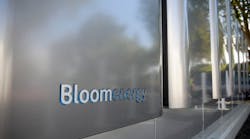From Potatoes to Chips: Ireland’s Export Evolution
When I look at the journey we’ve taken here in Ireland, I believe we have a unique story to tell. One that has a depth of history, but also a spirit of ingenuity that drives creative solutions and problem solving. We do it through building and maintaining relationships to create trust which is an inherent part of Irish culture that translates successfully to the business environment. Perhaps most importantly, I believe Ireland has become a successful exporter of data and digital infrastructure skills and services because of the knowledge learned and the confidence given to Ireland and the Irish from the influx of multinationals over the years. It also plays into the Irish willingness to change our society/economy from one built on agriculture to one of technology, or from “Potato to Chip” as it were.
Six decades of foreign direct investment
Foreign direct investment (FDI) has long played a role in Ireland’s economic growth and development. David McWilliams in The Irish Times sums it up a bit cheekily as “talking European, walking American, sounding Irish”, but he has a valid point. Ireland sits in a sweet spot of being a part of the EU and holding European values; having cultural ties to the US with institutions that align to American trade and legal requirements; yet, being a sovereign nation that creates its own business friendly environment.
This has resulted in a track record of successful partnerships between Irish companies and multinational organisations spanning multiple industries over numerous decades. Many indigenous Irish companies have been able to capitalise on the knowledge, experience and skill sets gained from the semiconductor, ICT, life science, and pharmaceutical industries to translate that expertise to the digital infrastructure industry and expand both globally and within Ireland. Many of our national and international partners at Host in Ireland have evolved, adapted and changed significantly over the decades and become skilled at delivering to the business requirements of multinational organisations. As a result, they understand the nuances to be able to answer the question before it is asked and continually exceed expectations.
The ICT export dividend
What results is a thriving export economy that sits side-by-side with the local economy. According to the World Bank, Ireland’s ICT export economy was more than $200 billion in 2021, more than the US and India combined. Chief economist for the Institute of International and European Affairs, Dan O’Brien, directly attributes this to the data centre industry, “This is what data centres generate, along with billions of euro in tax revenues and tens of thousands of jobs.”
The format and make up of Irish exports have changed over the last 50 years from one predominantly based on agriculture to a more diverse economy made up of ICT, pharmaceuticals, life sciences, finance and more. A key segment of which today is the design, build, supply and operation of the digital infrastructure sector.
Strong outlook ahead
Over the past 50 years, Ireland has had numerous challenges associated with its success. Whether it is transitioning from being the largest global exporter of floppy disks/CD-Roms to migrating data to cloud-based digital infrastructure, with these challenges come great opportunities. If we measure the health of the sector not just by what is going on locally, but why is happening globally, there is much reason to be optimistic. Export activity for the Irish ecosystem is seeing greater exports of services and products than the domestic sector for the first time in 2021. Which is validated by the fact that the data centre market opportunity in Europe is expected to grow to $66B by 2030, with Ireland representing only 10% of that opportunity.
Our Host in Ireland partners feel that within their businesses as well. As part of our annual Host in Ireland Business Sentiment survey, we asked 50 participants from Ireland’s data centre ecosystem about their talent and business outlooks. Job growth sentiment is very strong with 92% of the respondents expecting their employee base to grow in the upcoming year. This is a 12-point increase over 2021 and reflects the continued growth and expansion of the industry. When asked about their business outlook, 82% of the respondents said they were positive or very positive about their future opportunities.
The depth and breadth of the Irish digital infrastructure ecosystem has not come about by accident. The success we see today is a continuation of the relationship Ireland has had with data for the last 60 years and the knowledge and experience accumulated by Irish companies. For Host in Ireland, we are proud of the community of global and Irish companies we have brought together to celebrate the unique role Ireland plays in digital infrastructure around the world. When we launched Host in Ireland in 2014, it wasn’t by chance we selected “Success through Collaboration” as our tagline. As we face the known and unknown challenges ahead, this ethos is not only a wish, but a must.
Garry Connolly is founder of Host in Ireland, a global initiative created to increase awareness for how and why digital infrastructure coming from Ireland – with global and Irish companies – plays a unique role around the world. Learn more in the Irish Data Centre Ecosystem Report.




